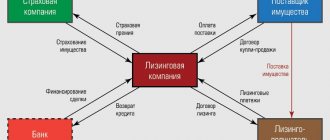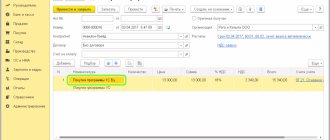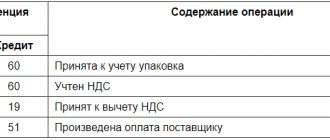Once again, the correctness of the taxpayer, who provided his employees with free lunches at the expense of the organization, was confirmed by the Moscow Arbitration Court in a ruling dated April 6, 2012 in case No. A40-65744/11-90-285.
Federal Tax Service No. 24 for Moscow filed a lawsuit against Avtotrade-AG LLC, accusing the company of unjustifiably including non-operating expenses in the audited period in the total amount of 4,252,175 rubles. During the consideration of the case by the arbitrators, it was established that the defendant company lawfully included in its income tax expenses the amounts paid for the provision of free food services to employees - since this point was enshrined in the Regulations on additional benefits, and in the employment contracts of employees it was stated that that they are covered by all the benefits established in this organization.
A contract is more valuable than money, or food is served
An integral document that will help regulate relations between employees and employers in the field of food provision is a collective labor agreement. In it, the parties have the right to prescribe the conditions for full or partial payment for meals (Part 2 of Article 41 of the Labor Code of the Russian Federation).
There are several options for organizing meals by the employer:
- compensation, additional payments, subsidies;
- concluding an agreement with a catering organization (cafe, buffet, canteen);
- ordering ready-made lunches for the office (catering);
- equipping one of the company's offices as a kitchen;
- creating your own dining room.
Each company chooses the most appropriate path for itself, after calculating the upcoming costs, tax obligations and assessing the risks. Each option has its own characteristics. For example, organizing a canteen is one of the most costly and complicated by bureaucratic procedures, which should be used by organizations with more than 200 employees. Therefore, we will talk about the most popular and least “dusty” options for presenting meals to company employees.
1) From hand to hand
The least troublesome way for an organization is to pay subsidies
for food, i.e. issuing money directly into the hands of employees.
An organization will be able to take into account the amount of subsidies for food as part of expenses that reduce taxable profit only if it is provided for in the labor (collective) agreement with employees (clause 25 of Article 270 of the Tax Code of the Russian Federation). If this is not specified, the payment amounts will be calculated from net profit.
Tea and coffee tax
An employer should not charge personal income tax on the cost of water, coffee, tea, sugar, and sweets purchased for the company’s office. If income in kind received by employees in the form of food is not personalized, then there is no subject to personal income tax. This is evidenced by the letter of the Federal Tax Service of Russia for Moscow dated August 28, 2006 No. 21-11/ [email protected]
But the company will still have to calculate VAT. Free treats refer to the gratuitous transfer of goods and in accordance with paragraphs. 2 p. 1 art. 146 of the Tax Code of the Russian Federation are subject to VAT.
It is possible that the employer compensates
employee expenses for lunches. This method is convenient because employees themselves determine where to eat, and the company does not need to enter into an agreement with a catering company. The amount of compensation for lunch should be established by local regulations, and in collective and labor agreements it is necessary to include references to the fact that workers are paid compensation.
The company also has the right to provide for additional payments
for food for employees, if possible (Article 41 of the Labor Code of the Russian Federation). If additional payment for food to employees is provided for by an employment (collective) agreement, these amounts can be taken into account as part of labor costs (clause 25 of Article 255 of the Tax Code of the Russian Federation).
The procedure for organizing the provision of meals to employees of the organization
The employer issues a separate local regulation. Such an act may be a provision on providing free meals to employees or includes relevant provisions on free meals in existing local regulations, such as regulations on wages, regulations on personnel. In them, the employer may indicate: “The employer undertakes to provide free lunches to employees. Free lunches are provided once a day for an amount not exceeding ____ (________) rubles.”
The following information can also be included in the local regulatory act:
- form of providing free food;
- the amount for which food will be provided to each employee, and the procedure for assigning it to a specific employee;
- the time at which the employee can receive free food, as well as the place in which this food is provided;
- a form for recording receipt of lunch and control (coupons, passes, as well as the procedure for receiving them);
- the procedure for paying compensation if the cost of lunch is compensated to employees in cash;
- procedure for withholding personal income tax amounts from employee salaries, etc.
The employer is obliged to refer to the local regulation regulating the provision of free meals to employees in the collective and (or) employment contract with employees, for example:
“The employee has the right, during the break for rest and food established by the internal labor regulations, at his discretion, to receive free food in the manner established by the Regulations on the provision of free food.”
Additional documents must be completed depending on the method of organizing free meals. For example, when creating your own canteen, this could be an order to open a canteen, regulations on the canteen, production instructions for canteen workers, etc.
2) All inclusive
If set meals are provided by a catering organization (cafe, restaurant, canteen), the employing company must enter into an appropriate agreement with it. It must reflect the conditions for providing meals to employees of this company. An option is possible when employees come to lunch and present a pass, coupon or sign in a statement or a special journal.
As for the scheme of current accounting and control, forms of acts and other documents, the employer and the catering organization choose them independently, based on ease of use. Settlements between the parties are reflected in the general manner using account 60 “Settlements with suppliers and contractors”.
3) Home delivery
Delivery of lunches to the office has become increasingly popular in recent years. This method is called catering (from the English sater - to supply provisions) - a catering service for catering.
The scheme for accounting and control of funds must be specified in the contract. If the document states that the employer company only pays for catering services, these transactions can be reflected in the same way as expenses for set meals.
In the case when a company buys lunches and then gives them to employees for a fee and this activity is of a regular nature, income and expenses from these operations should be recorded on account 91 “Other income and expenses” or on account 90 “Sales”.
If the employer purchases lunches and gives them to employees free of charge, the dishes should be recorded in account 10 “Materials”.
4) Kitchen nearby
A fairly common option today is to convert one of the company’s offices into a kitchen, equipping it with various household appliances and furniture. In Art. 223 “Sanitary, medical and preventive services for workers” of the Labor Code of the Russian Federation provides for the employer’s obligation to improve the premises for meals during working hours.
Free food is the norm
Free meals in the organization are provided by law only for certain categories of personnel. The list of these professions, positions and industries is determined by order of the Ministry of Health and Social Development of Russia dated February 16, 2009 No. 46n.
At the same time, personal income tax and contributions for compulsory pension (social, medical) insurance are not charged (clause 3 of article 217 of the Tax Code of the Russian Federation, clause 2 of part 1 of article 9 of the Federal Law of July 24, 2009 No. 212-FZ).
The standards by which a room for eating should be equipped are established in SNiP 2.09.04-87 “Administrative and domestic buildings” (approved by Decree of the USSR State Construction Committee dated December 30, 1987 No. 313). So, according to clauses 2.48 - 2.52 of SNiP 2.09.04-87, if the number of workers is less than 30 people per shift, you can equip a room for meals (for up to 200 people - a canteen or canteen-dispensing room).
In order to justify the costs of allocating premises for a dining room, as well as the purchase of household appliances, a condition on providing employees with this premises for meals should be stated in the collective agreement or local regulations.
Based on paragraphs. 7 clause 1 art. 264 of the Tax Code of the Russian Federation, the costs of arranging dining rooms should be taken into account as other costs associated with the production and sale of goods (work, services).
If the cost of purchased furniture and equipment for equipping a kitchen exceeded 40 thousand rubles, and the service life is more than 12 months, it will have to be repaid by calculating depreciation (clause 1 of Article 256 of the Tax Code of the Russian Federation).
Taxation of compensation
Compensation payments may or may not be subject to taxation and calculation of contributions to funds. There are several cases when compensation is not subject to personal income tax:
- If such an obligation arises for the employee due to the fact that the employee works at work with harmful working conditions. In such a situation, the costs incurred do not relate to wages, so the organization’s accounting department has the right to include these costs in employee benefits, which will reduce the tax rate on the profit received by the organization.
- When issuing compensation as daily allowance. The legislation stipulates maximum amounts of payments that are not subject to taxes; if the amount is exceeded, the remainder is subject to both personal income tax and contributions.
Attention! If an organization provides buffet meals to its employees, the tax authorities consider this as a payment of income. If the employer can prove that such a desk is available not only to its employees and is not a mandatory part of the employment relationship, then the services may be recognized as tax-free.
Article 210 of the Tax Code of the Russian Federation “Tax base”
Read also: Taxes of self-employed citizens in 2021
Article 217 of the Tax Code of the Russian Federation “Income not subject to taxation (exempt from taxation)”
Personalization of data
The amounts transferred for food for employees are their income in kind and are subject to personal income tax (clause 1 of Article 210, clause 1 of clause 2 of Article 211 of the Tax Code of the Russian Federation).
When organizing meals on a buffet basis, the amount of such natural income for a specific employee cannot be determined. The Ministry of Finance of Russia recognizes that in the absence of the opportunity to personify and evaluate the economic benefit received by each employee, income subject to personal income tax does not arise (letter of the department dated April 15, 2008 No. 03-04-06-01/86, resolution of the Federal Antimonopoly Service of the Ural District dated 08/20/2009 No. Ф09-5950/09-С2).
And yet, in order to avoid claims from regulatory authorities, it is advisable to organize meals for employees in such a way that it is possible to determine the income received by each of them.
As for compensation and subsidies, these forms of payment for food are subject to personal income tax. The calculated amount of tax must be withheld directly from the employee’s income upon actual payment (Clause 4 of Article 226 of the Tax Code of the Russian Federation). In this case, the withheld tax amount cannot exceed 50% of the payment amount.
Tailed Employee
A dog, as you know, is a friend of man, but also a faithful and reliable guard. To protect their office from uninvited guests, the management of some companies makes a simple decision - to place a booth at the entrance and put a guard dog on a chain. And everything would be fine, but in order to avoid claims from regulatory authorities, pets will have to be kept according to the standards established by kennel clubs, depending on the breed of guard dogs (clause 4 of the letter of the State Tax Inspectorate for Moscow dated November 24, 1998 No. 11- 13/35186).
In accounting, the costs of maintaining dogs are taken into account in account 26 “General business expenses”. In tax accounting, it would be correct to classify such expenses as other expenses (clause 6, clause 1, article 264 of the Tax Code of the Russian Federation).
Let’s not forget to accrue insurance contributions: they are subject to taxation into extra-budgetary funds of payments in favor of employees made within the framework of labor relations, including those provided for by labor and collective agreements, local regulations (letter of the Ministry of Health and Social Development of Russia dated May 19, 2010 No. 1239 -19 and dated August 5, 2010 No. 2519-19).
Payment of the cost of food for employees in 1C: ZUP ed. 3.1
Published 25.11.2020 15:54 Author: Administrator In practice, accountants are increasingly faced with issues of employee nutrition. Options for paying for food are distinguished by their diversity: a specialized organization can bring ready-made food to your enterprise; you can issue ready-made food products yourself; an employee can be compensated for a certain amount that he spends on food at his own discretion; the employee is provided with food in the canteen, which is regarded as wages, i.e. income in kind, thereby increasing his income. Naturally, the option you choose must be secured by an employment or collective agreement, or the Regulations on remuneration. In this article we will consider the last option, i.e. payment of food costs for employees.
clause 1 art. 210 of the Tax Code of the Russian Federation states that when determining the tax base for personal income tax, all income of the taxpayer received by him both in cash and in kind is taken into account. Since income in kind includes, in particular, payment for food to the taxpayer, according to paragraphs. 1 item 2 art. 211 Tax Code of the Russian Federation. Consequently, the cost of food paid by the organization for its employees is subject to personal income tax in the generally established manner.
However, there are exceptions to this rule and the cost of meals for employees is not always subject to personal income tax. If, in accordance with the law, the employer is obliged to provide an employee with free food, then the cost of food is considered as compensation related to the performance of work duties. For example, it is mandatory to provide free food and meals to employees who are employed in jobs with harmful and especially harmful working conditions (Article 222 of the Labor Code of the Russian Federation). In this case, the cost of food is exempt from taxation (clause 1 of Article 217 of the Tax Code of the Russian Federation).
In general, payments to employees within the framework of labor relations are subject to insurance contributions to extra-budgetary funds (clause 1 of Article 420 of the Tax Code of the Russian Federation, clauses 1, 2 of Article 20.1 of the Federal Law of July 24, 1998 No. 125-FZ). Payment for meals established by the collective agreement of the organization is not a compensation payment provided for by law, which is exempt from insurance premiums on the basis of paragraphs. 2 p. 1 art. 422 Tax Code of the Russian Federation, paragraphs. 2 p. 1 art. 20.2 of Federal Law No. 125-FZ, therefore it is subject to contributions in the generally established manner.
In our example, the collective agreement of Petrovskie Zori LLC provides for payment of meals to an employee for a month worked in the amount of 4,500 rubles. Meals are provided in the organization's canteen, where the number of meals provided is recorded. If an employee has not worked for a full month, then the cost of food is calculated for the days actually worked. If the food cost limit is exceeded, the employee is charged the difference in cost.
Employee Vishnevskaya S.N. I worked for 6 days in August and quit. Food expenses amounted to 1950 rubles. We will charge the cost of food within the limit established by the organization, calculate and deduct the additional payment for the cost of food.
We will simulate the example in the 1C program: ZUP ed. 3.1. Let's do some setup first.
Setting up a program to calculate natural income (cost of food)
Step 1. Open the “Settings” - “Payroll” section.
Step 2. Follow the hyperlink “Setting up the composition of charges and deductions”.
Step 3. On the “Other accruals” tab, check the “In-kind income is recorded” checkbox. Click Apply and Close.
As a result of this setting, the accrual “Income in kind” with the accrual purpose type – “Income in kind” will become available in the directory of accrual types.
Step 4. Go to “Settings” - “Accruals”.
Step 5. Open the accrual card. This accrual is entered as a fixed amount for a separate document.
This calculation procedure does not coincide with our condition. Therefore, we will create a new accrual.
Creating and setting up the “Payment for food” accrual
Step 1. In the “Accruals” directory, click the “Create” or “Create by copying” button.
Let's define the accrual in the same way as income in kind, and set the procedure for performing the accrual. More meanings apply to our type of accrual:
• is carried out according to a separate document - in this case, the document “Income in kind” is entered to accrue it.
• monthly – introduced by personnel orders.
Next we will look at both options.
Let's set our own calculation procedure.
To do this, set the switch to the “Result is calculated” position and set the formula – hyperlink “Edit formula”.
In our example, the cost of paid meals for an employee depends on the number of days worked and we need to set it somewhere. Therefore, we need to define and enter our indicators for calculation.
The formula should look like this:
Cost of Food/NormDays*TimeInDays
Where:
Food Cost is a new indicator that is given a value. In our example, this is 4,500 rubles.
NormaDays is the norm of days according to the schedule for the employee;
TimeinDays is the employee’s actual time worked, determined automatically by the program.
Step 2. To enter the formula, create the Cost of Food - the “Create indicator” button.
Step 3. Fill in the data: name, short name, identifier.
The purpose of the indicator can be set for:
• organizations;
• divisions;
• employee.
Since we have the same cost of food for the entire organization (4,500 rubles), we indicate the value “For the organization.” In the future, we will indicate this cost in the settings.
Click "Save and Close".
Step 4. Double-click on the indicator or click “Add indicator” to create a calculation formula. In this case, you can use arithmetic signs and functions (for example, OKR - rounding).
Click “Check”, save the formula and the created accrual type.
Our new accrual card “Payment for food” looks like this.
Step 5. On the “Time Accounting” tab, set the time type to “Working time”. Without this, the program will not save the accrual and will remind you of this.
Step 6. On the “Taxes, contributions, accounting” tab, check that the personal income tax code is 2510 – “Payment for the taxpayer for goods, work, services or property rights, including utilities, food, recreation, training in his interests” .
Let's save and check how our calculation works. But before that, let’s set up the value of the employee food cost indicator.
Setting the food cost metric value for your organization
Before entering our indicator, let's do some adjustments, because... There is no form for entering the indicator in the program yet.
Step 1. Go to the “Settings” “Input Data Input Templates” section.
Step 2. In the “Input Data Entry Templates” reference book, click “Create”.
Step 3. Set the name and presentation. In the "Salary Metrics" section, set the radio button to "Continuous" and select our new "Meal Cost" metric.
Step 4. Save the template using the “Save and Close” button.
What did this give us? Let's look further...
Step 5. Go to the “Salary” - “Data for salary calculation” section.
Step 6: Click Create. An inscription appeared in the menu: “Cost of employee meals” - i.e. This is our template for entering food cost data.
Step 7. Set the date and cost of meals - 4,500 rubles.
So we established the value of the indicator and this data was recorded in the “Data for Payroll Calculation” journal. When the value of this indicator changes, a document with current data is also entered.
Assigning payment to an employee for food costs
We can assign meals to an employee either as a separate document or monthly. Let's consider both configuration options.
Payment of food costs according to a separate document
If it is established in the accrual card that the accrual is entered in a separate document, then to accrue payment for the cost of food to an employee within the established amounts, the document “Income in Kind” in the “Salary” section is used. Let's consider it.
Step 1. Open the “Income in Kind” journal in the “Salary” section.
Step 2. Fill out the header of the document (months, date, department). Select the type of income “Payment for food” and indicate the date the income was received. Fill out the tabular part with employees - the “Selection” or “Add” buttons. The table will be automatically filled with indicators and display the calculation.
Employees who have worked for a full month are credited with the full amount. And employee Vishnevskaya S.N. I quit after working for 6 days.
The program automatically calculated the cost of paying for food based on the actual time worked and the standard time according to the schedule. In August, the five-day work schedule is 21 working days.
4500/21*6=1285.71 rub.
Our formula works correctly.
Payment of food costs monthly
Let’s consider the option of paying for an employee’s meals if the accrual setting is set to “Monthly”.
In this case, such payment is fixed by personnel orders when hiring, personnel transfer, changing wages, assigning planned accrual, etc. You can assign an accrual using any document that contains the “Payment” section.
Let's consider the assignment of accrual to employees for payment of food costs from August 1 using the document “Assignment of planned accrual”.
Step 1. Go to the “Human Resources” section - “Change employee pay”. Click “Create” and select the “Planned Accrual Assignment” document.
Step 2. Fill out the header of the document: date, accrual name, validity period. Select a list of employees. The accrual indicator “Cost of food” is entered in the document itself. To do this, click the “Fill in indicators” button and indicate the value of the indicator – 4,500 rubles. Click “Ok” and the value will be transferred to the table for all employees.
When you enter an accrual using personnel documents and assign it to an employee, the entry will appear when accruing at the end of the month when you enter the “Payroll and Contributions” document.
Step 3. Accrue your salary and check the accrual lines “Payment for food”.
Having considered two methods of entering accruals, you can decide which method is more convenient for you.
Let's consider the situation further. We have introduced the accrual “Payment of the cost of food” in the amount determined by the norm at the enterprise - 4,500 rubles. In fact, the employee ate for a large amount. How to reflect this in the program? Let's look further.
Withholding for employee meals above a certain norm
Creating and setting up a new hold
Let's create a new retention and assign it to the employee.
Step 1. Go to “Settings” - “Holds”. Click New and set your retention options.
• Set the deduction purpose to “Deduction for settlements on other transactions.”
• Retention is carried out – “Monthly”.
• Set the calculation order.
When the deduction is set to a fixed amount, this order of entry will not raise any questions. It will be enough to enter the amount of the difference for food in the document, and it will be included in the salary calculation. But we will try to automate our calculation as much as possible, so we will set the calculation formula - the “Edit formula” hyperlink. Next, we will enter the indicators that will be specified in the document for employees.
Step 2. Enter a new indicator “Actual cost of employee food”. It will be entered by documents and requires entering a value. This setup is optimal for us.
Step 3. Using the new indicator, we will set the calculation formula.
Let’s immediately make a reservation that when calculating the difference in the cost of food, we use the “Calculation base” . For what? After all, the idea immediately arises of calculating this way: “Cost of food” minus “Cost of employee food (actual).”
But with this calculation, the program will not take into account that the employee may not work for a full month, but will make the calculation based on the cost standard that we set in the settings. By entering the “Calculation base” indicator, the user sets this base independently. And by indicating the “Payment for food” accrual as part of the calculation base, the program will take the actually accrued amount, taking into account the days worked. This can obviously be seen in employee S.N. Vishnevskaya, who did not work for a full month.
Step 4. Set the calculation base on the “Base calculation” tab using the “Selection” button.
Step 5: Click “Save and Close.” The hold has been created.
Entering and calculating the deduction of the cost of food above the norm for an employee
To enter the created hold, follow these steps:
Step 1. Go to the “Salary” - “Alimony and other deductions” section. Create a new document “Deductions for other transactions”.
This type of document appeared in the list because... When creating a hold, we specified this type of operation in the settings.
Step 2. Fill out the document indicating the actual cost of employee meals for the period.
Employee Vishnevskaya S.N. quit on August 10 and the calculation is made based on the days actually worked (6 days). The actual cost of food for these days was 1950 rubles. Based on the norm, she was credited (see example earlier) 1285.71 rubles. Accordingly, we need to calculate and maintain the difference in nutrition (664.29 rubles)
Step 3: Click "Swipe and Close". The document has been entered, the actual cost of the employee’s meals is recorded.
When calculating wages, the program will automatically calculate the withholding. Let's check this, because according to employee S.N. Vishnevskaya. a dismissal order has been entered; wages are calculated in this document.
Step 4. Let's recalculate its accruals and deductions.
Payment of accrued food costs is reflected on the “Accruals” tab (subject to configuration - entered monthly, NOT as a separate document).
The “Deductions” tab shows the calculation of the difference in payment for food. As you can see, the calculation is correct. The calculation takes into account the actual accrued cost for food, taking into account the days worked. The document shows the calculation indicators:
• actual cost of food – 1950 rubles.
• calculation base - the cost of food according to the standard, based on the actual time worked - 1285.71 rubles.
• retention period and calculation result – 664.29 rubles.
The retention is calculated.
Step 5. Create an “Employee Payslip”.
Please note that the “Payment for food” accrual is reflected at the bottom of the pay slip, in the “For reference” section. Retention of the cost of food above the norm is reflected, as usual, in the “Retention” section. In the calculation of the line “Debt of the enterprise at the end”, the amount “Payment for food” is not included, because This is income in kind.
You can, of course, use fixed amounts in your calculations, but try to automate the calculation process as much as possible, thereby making your work easier in the future.
Author of the article: Olga Kruglova
Did you like the article? Subscribe to the newsletter for new materials
Add a comment
JComments
To tax or not?
One of the conditions for deducting VAT is the use of goods, works, services to carry out transactions recognized as the object of taxation by this tax (clause 1, clause 2 of Article 171 of the Tax Code of the Russian Federation).
There is no official position on the issue of charging VAT on the provision of free food to employees. Letter No. 16-15/22410 of the Federal Tax Service of Russia for Moscow dated March 3, 2010 states that the distribution of lunches to employees free of charge, that is, free of charge, is subject to VAT. This position is confirmed by the resolution of the Federal Antimonopoly Service of the Moscow District dated April 27, 2009 No. KA-A40/3229-09-2 in case No. A40-34660/08-35-115. The court indicated that providing free lunches to employees is a service and is therefore subject to VAT.
A diametrically opposite decision was made by the Federal Antimonopoly Service of the West Siberian District dated September 15, 2008, No. F04-5056/2008 (10064-A75-25) in case No. A75-1465/2008. The court found that employee meals were paid for from the profits remaining at the disposal of the enterprise, and food services were provided by third parties at the expense of the employer. In this situation, when transferring lunches to employees, there is no sales and there is no reason to pay VAT (a similar decision was made by the Federal Antimonopoly Service of the Moscow District dated July 16, 2007, July 18, 2007 No. KA-A40/5665-07 in case No. A40-53703/06 -140-348).
Employee meals, tax consequences - VAT
Experts from the Ministry of Finance and the Tax Service are in favor of the organization paying VAT to the budget on the cost of free meals for employees. They consider such food as a gratuitous transfer of goods to employees (Letter of the Ministry of Finance of the Russian Federation dated July 5, 2007 N 03-07-11/212, Article 146 of the Tax Code of the Russian Federation, Article 154 of the Tax Code of the Russian Federation). Another position, which taxpayers often adhere to, is that there is no need to charge VAT on the cost of free food, since it is organized within the framework of production activities in accordance with the requirements of an employment or collective agreement. Therefore, the provision of free or reduced-price meals to employees is not subject to VAT taxation (Resolution of the Federal Antimonopoly Service of the North-Western District dated September 26, 2005 N A44-1500/2005-15, Article 146 of the Tax Code of the Russian Federation). But we warn you that if you adhere to this position, you will have to come to terms with the fact that input VAT associated with the purchase of goods (work, services) for feeding workers cannot be deducted (Article 171 of the Tax Code of the Russian Federation) nor taken into account in expenses (Article 170 of the Tax Code of the Russian Federation). And, of course, you need to be prepared for a dispute with tax officials.
Note to accountants
The provision of meals for employees by the employer is recognized as part of the wage fund. The company has the right to take into account payments for lunches as part of expenses for ordinary activities (clause 5 of the Accounting Regulations “Expenses of the Organization” PBU 10/99, approved by order of the Ministry of Finance of the Russian Federation dated May 6, 1999 No. 33n).
The accountant must reflect these expenses as part of wages: Debit account 20 “Main production” or Debit account 44 “Sales expenses”. Credit to account 70 “Settlements with personnel for wages” (Instructions for using the chart of accounts).
Repayment of accrued amounts (issuance of ready-made meals to employees) is reflected in accounting by the entry: Debit account 70, Credit account 90 “Sales”. At the same time, the actual cost of ready-made meals issued as wages is written off to Account 90 Debit.
In a situation where the provision of free meals to employees is not provided for by an employment (collective) agreement, in accounting these expenses are recognized as part of other expenses (clause 11 of PBU 10/99). As for the actual cost of dishes, it should be written down as follows: Debit account 91 “Other income and expenses”, subaccount 91-2 “Other expenses”, Credit account 20 “Main production”.
Ekaterina Petrova
Employee meals and tax consequences - income tax
In paragraph 25 of Art. 255 of the Tax Code of the Russian Federation states that in labor costs an organization may include other payments in favor of employees not mentioned in paragraphs 1 - 24 of Art. 255 of the Tax Code of the Russian Federation, provided that they are provided for in the employment contract or local regulations. This position is also shared by officials of the Ministry of Finance. Thus, Letter No. 03-03-04/1/344 dated November 8, 2005 states: the cost of free lunches provided is taken into account when determining the tax base for income tax as part of labor costs, provided that such meals are provided for in the employment contract.
It is also worth noting that since free or reduced-price meals for employees are labor costs, such expenses must be personalized (that is, the total amount of food expenses must be clearly distributed among employees). If there is no such distribution between employees, then it is impossible to determine the amount that each employee received. Consequently, it is generally impossible to include such “general” food expenses either in the cost of paying for his labor or in other expenses (Letter of the Ministry of Finance of the Russian Federation dated March 4, 2008 N 03-03-06/1/133).







